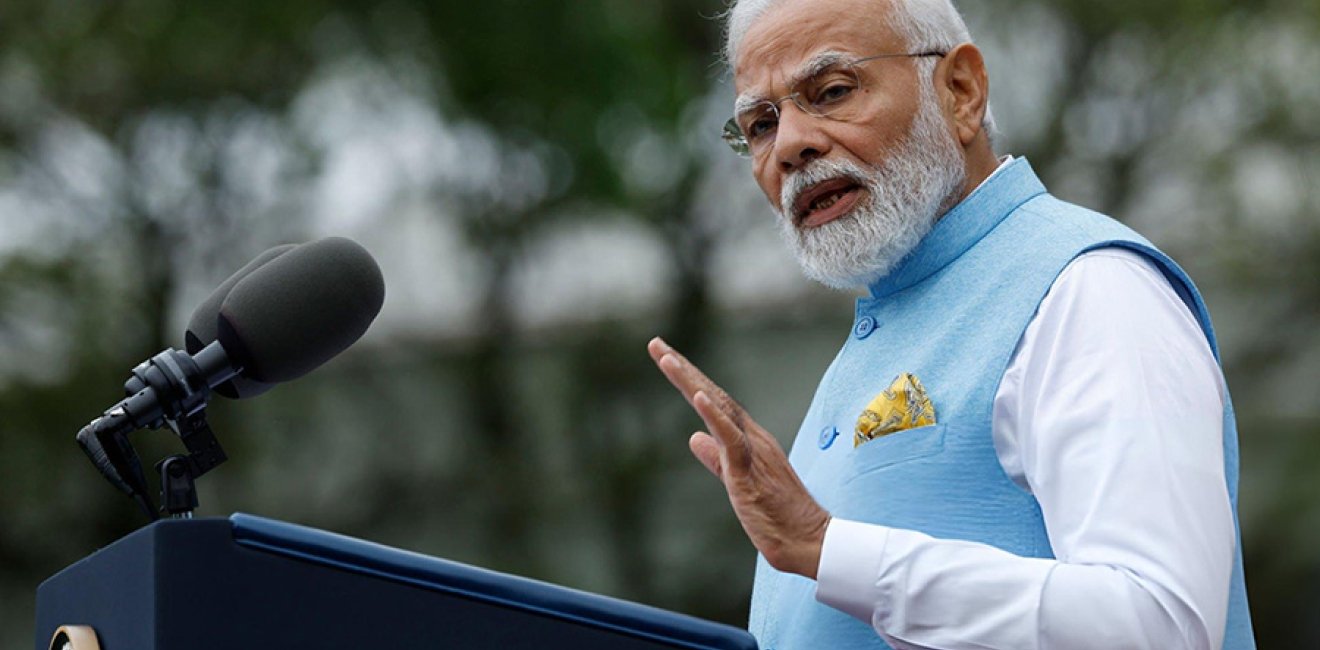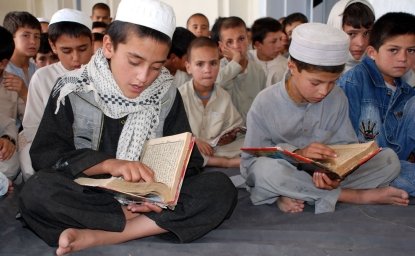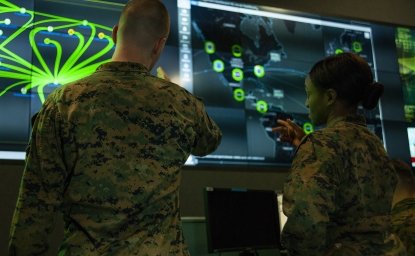
A blog of the Indo-Pacific Program
India’s electorate has given Prime Minister (PM) Narendra Modi and his National Democratic Alliance (NDA) a third successive term in power in 2024, marking a first since then-PM Jawaharlal Nehru attained the feat in 1962. A significant takeaway from the general elections results has been the remarkable resilience of India’s democracy and the electorate’s maturity in voting for political stability and policy continuity. There have been only 18 such elections over the last 77 years since India’s independence in 1947, an average of an election nearly every 4.5 years as against the periodic requirement for elections every 5 years in a democracy. Only 14 leaders, including a woman and another from a minority religion (something not seen in even major powers like the United States, China, and Russia), have occupied the top leadership position—an average of 6.5 years per leader well above the five-year term of a single general election. For over three decades since 1998 (assuming the current government lasts its full five- year term until 2029), PM Modi is only the third leader to occupy the top leadership position. The choice for political stability and policy continuity is even more remarkable considering that India’s electorate has chosen coalition governments (with either of the two major parties i.e., Congress and the BJP always emerging as a single largest party) to govern over a quarter of the period since 1947 (33 of the 82 years until 2029). Hence India’s democracy has done remarkably well to facilitate its foreign policy and national security interests evident in its consistent and bi-partisan approach since independence.
Coalition Politics: Restraint or Continuity?
In 2024, the Bharatiya Janata Party (BJP) has emerged as the single largest party, winning 240 of the 543 seats in the Indian parliament. It had won 303 and 282 seats on its own in the 2019 and 2014 elections, respectively. Its pre-polls alliance partners—numbering over 30 political parties, large and small—won a combined 52 seats, taking the consolidated seats won by the alliance to 292 i.e., 20 more than the required number for a simple majority. There are three important takeaways:
- This is not the first time that PM Modi and the BJP are experiencing coalition politics. The NDA was formed by the erstwhile BJP leadership nearly 30 years ago in 1998, and was in power for half that period i.e., 15 years including the previous two terms of the Modi administration. Comparatively, the Indian National Congress (INC), the then-single largest party formed the United Progressive Alliance (UPA) to form the government only after the general elections in 2004.
- The NDA has gradually evolved from 20 parties in 1998 to over 30 parties in 2024. Comparatively the UPA has given way to the Indian National Developmental Inclusive Alliance (INDIA) in 2024.
- The major coalition partners of the present NDA—Telugu Desam Party (TDP) with 16 seats; the Janata Dal United (JDU) with 12 seats; and the Shiv Sena Shinde (SSS) with 7 seats—were its founding members in 1998. Since 1998, the BJP has fought every general election together in a pre-poll alliance with the SS, the JDU (except in 2014) and the TDP (except in 2009 and 2019). Hence, there is significant experience of working together among these parties that are led by veteran regional leaders with immense leadership experience.
Interestingly, both times that ruling alliances have lost their majority in power—the NDA in 1998, when its coalition partner from the state of Tamil Nadu (the AIADMK) withdrew support and the UPA in 2009, when the Left parties withdrew support over a foreign policy issue i.e., the nuclear deal with the United States - the Indian electorate has voted them back to power, signaling its rejection of coalition partners withdrawing support during the five-years term of a government. Hence, the new coalition government is also expected to provide stable governance over the next five years.
All this said, a significant difference from the previous Modi coalition governments of 2014 and 2019 is that this time around the BJP will be more dependent on its coalition partners to remain in power. Hence, any polarizing policy decisions—such as the 2016 demonetization of currency notes or the new three farm laws of 2020—are likely to be put on the backburner by the present government. Simultaneously, the BJP will have to engage extensively in consensus building within its alliance on polarizing policy decisions such as the Agniveer Scheme (AS) for the armed forces, the Uniform Civil Code (UCC), the Citizenship (Amendment) Act 2019 (CAA), National Register of Citizens (NRC), and the One Nation One Election (ONOE).
Unlike previously, when all recruitment into the army was long term, under the AS rolled out in June 2022 as part of defense modernization efforts, the earlier recruitment rules have been amended whereby only 25 percent of recruitments will be retained after four years of service, subject to merit and organizational requirements. The remaining 75 percent of the recruited will be released. Meanwhile, unlike currently, when personal laws of various religious communities are governed by their religious scriptures, the UCC is a proposal to formulate and implement personal laws of citizens which apply to all Indian citizens equally—regardless of their religion. In terms of the CAA, in 2019 the Citizenship Act of 1955 was amended, by providing an accelerated pathway to Indian citizenship for persecuted religious minorities—but not Muslims—from Afghanistan, Bangladesh, and Pakistan who arrived in India by 2014. The NRC is meant to be a register that documents all legal citizens of India so that the illegal immigrants can be identified and deported. The Modi government announced plans to implement it in 2021, but it has not yet been implemented. Finally, ONOE is a proposal under consideration by the government to synchronize all elections in the country either on a single day or within a specific time frame. A committee under the former president of India, Ram Nath Kovind, submitted a report in March 2024 that proposes its implementation
Foreign Policy and National Security Implications
There will be continuity in foreign policy and national security under the coalition government. The major coalition partners are representatives of the three following states: Bihar with 3 alliance partners consisting of the JDU; the Lok Jan Shakti (Ram Vilas) led by Chirag Paswan and the Hindustan Awam Morcha led by former Bihar CM Majhi with 18 seats; Andhra Pradesh with 2 alliance partners consisting of the TDP led by Chief Minister Naidu and the Jana Sena led by the region’s movie star Pawan Kalyan with 16 seats; and Maharashtra with SSS led by Chief Minister Shinde with 7 seats.
Engaging the Diaspora: These three states make up a significant number of the Indian diaspora abroad. Nearly 1.3 million of the 5 million Indian diaspora in the US are from Andhra Pradesh primarily consisting of working professionals in the technology industry and youth pursuing higher education in technical fields. Around 7 million Indian diaspora members in island countries around the Indian Ocean region and the Indo-Pacific are from Maharashtra. Bihar also has a significant number of diaspora in key island countries like Mauritius and Seychelles, which are part of PM Modi’s Security and Growth for All in the Region (SAGAR) initiative in the larger Indian ocean region; Fiji in the Indo-Pacific region, where India has been engaging actively particularly in recent years; and the Caribbean Islands. There are also Bihar diaspora members in South Africa, part of both the BRICS grouping with India and the African Union that became a member of the G-20 when India held the presidency of that body in 2023. Furthermore, Chief Minister Kumar for the first time in January 2021 held an interaction with the Bihar diaspora in the United States.
Driving Development: Chief ministers Nitish Kumar, Chandrababu Naidu and Eknath Shinde are experienced administrators and development focused. They need capital for developing infrastructure and connectivity in their respective states. Andhra Pradesh is in the process of setting up its new capital Amravati. Mr. Naidu has been the chief minister for 14 years earlier and the fourth time currently. Bihar and Maharashtra are going to state elections in late 2024. Mr. Kumar has been chief minister for 18 years and is now in his ninth term. He is aiming to cement his legacy by being re-elected again for which development will be his primary plank. Maharashtra is one of the most industrialized states, an economic hub and the financial capital of the country. The recent general elections pitting two coalitions for the state indicates a tightly fought contest for the upcoming state elections. Hence like Bihar, development will remain the focus for chief minister Shinde in Maharashtra.
The conduct of foreign policy is expected to become increasingly professional rather than driven by political compulsions.
Engaging with their respective diasporas and attracting foreign investments will be the key to achieving their economic and political objectives. Hence, the major coalition partners of the NDA will encourage continuity in foreign policy engagements as seen in the previous two terms of the Modi administration. The conduct of foreign policy is expected to become increasingly professional rather than driven by political compulsions. Mr. S. Jaishankar, the external affairs minister, now serving a second consecutive term, is a career diplomat who has risen through the ranks. He is considered to enjoy the complete confidence of PM Modi. This was evident with Mr. Jaishankar meeting the invited leaders of neighboring countries for the swearing in ceremony of the Modi 3.0 government well ahead of the allocation of the announcement of ministry portfolios which was a closely guarded exercise. He continues to head the foreign ministry despite the presence of his senior Foreign Service colleague, Mr. Hardeep Puri, who has held important professional positions including as the Permanent Representative to the United Nations. PM Modi will rely on Jaishankar’s inputs on all foreign policy matters. Additionally, as a career diplomat rather than a politician, Jaishankar will be more influenced by his professional skills and experiences rather than political considerations while making decisions and/or giving inputs.
Managing Global Profile: Will India’s foreign policy profile increase globally-- i.e., through a proactive role in conflict resolution in Ukraine and Gaza for example compared to the previous two terms of the Modi government? This will be an interesting development to observe through its third term. It appears that, at least over the next year or two, a combination of the international and domestic environments, are not appear to be very conducive for an increasing Indian role. Globally, 64 countries and the European Union are going through elections in 2024, with almost 50 percent of the world’s population voting. Governments will be preoccupied with either retaining power or remaining abreast of their national priorities and interests after being elected to power. Domestically, the NDA’s political leadership including PM Modi are expected to focus on strengthening equitable economic development and strengthening financial mechanisms even as they engage in consensus building on key but contentious issues such as the Uniform Civil Code, Citizenship Amendment Act-National Registry of Citizens, Agniveer Scheme for the armed forces and One Nation One Poll. They will also remain preoccupied assessing the BJP’s worse-than-expected performance in key states in the 2024 national elections. Hence while the External Affairs ministry and its minister will remain active in continuing established mechanisms, pursuing Indian interests and securing India’s global profile, PM Modi is not expected to travel extensively across the globe, and particularly not with the high level of intensity seen during his first term as prime minister. Interestingly, PM Modi, preoccupied with proceedings in the Indian parliament, deputed Jaishankar to attend the SCO summit in Astana in July 2024.
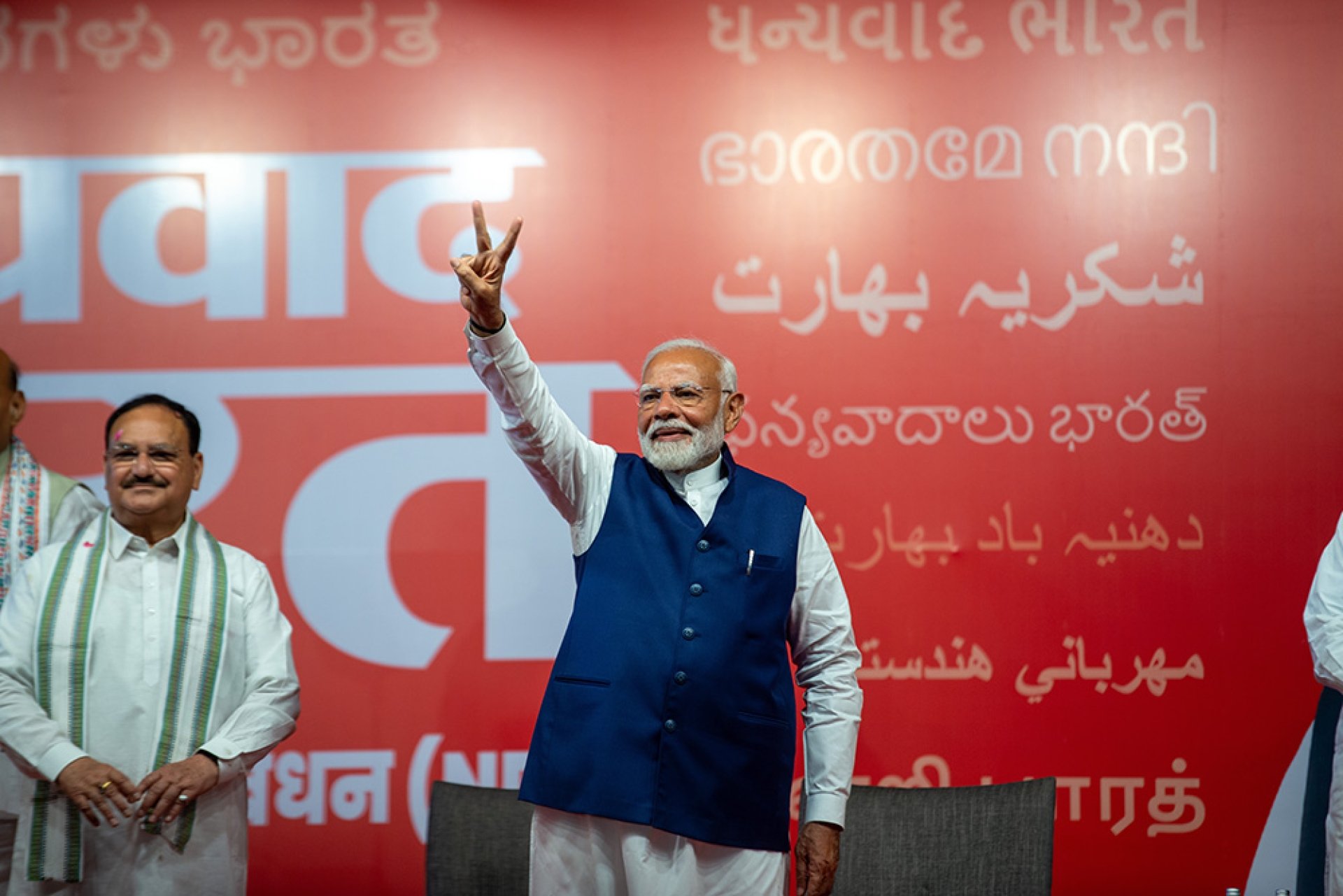
Foreign Policy Priorities
Establishing Viksit Bharat and Becoming Vishwa Bandhu/Mitr: PM Modi has envisioned a Viksit Bharat (Developed India) by 2047. The external affairs minister has spoken about India’s desire to be a Vishwa Bandhu/Mitr (Global Friend) consistent with India’s G20 motto of Vasudeva Kutambakam (World is One Family). To achieve these goals, India will need increased access to global resources, markets, technologies, and practices. It will focus on carrying along partner countries that have divergences with each other like the United States and Russia. It will work to ensure connectivity across borders for enabling resilient supply chains particularly for critical resources. The supply of active pharmaceutical ingredients from China is an example of India’s dependency on an adversary for a critical resource. Such dependencies have to be offset through alternate supply chains. It will create a global workplace for Indian skills and talent. In this context, mobility agreements with European countries, Australia, and Japan have already been concluded. It will engage intensively on critical areas such as assuring basic needs; strengthening critical information; enhancing defense; and empowering research, design, and innovation. It will also expand manufacturing, invest in critical and effective technologies, and conduct effective diplomacy for increasing international collaboration.
Neighborhood First: India will continue to prioritize its relations with neighboring countries amidst recent developments that have increased its concerns. In Maldives, President Mohamed Muizzu has successfully removed the limited Indian military presence amidst growing Chinese influence on the island. Power in Nepal, which has shifted all too frequently over the years, leading to political instability, is now in the hands of the Left parties led by Pushpa Dahal (“Prachanda”) in coalition with KP Oli, who previously as PM had overseen a noticeable deterioration of relations with India (though early July saw some major developments in the coalition that may bring Oli back to power). Sri Lanka is still recovering from its economic woes and has considerable debt obligations with China, which is a concern for India. So is an increasing Chinese naval presence in the Indian Ocean Region. There is limited or almost no engagement with western neighbors Pakistan and Taliban led Afghanistan. Bhutan continues to face intense pressure from China on boundary matters where India is also a net security provider. The political and bureaucratic leadership in the external affairs ministry led by Mr. Jaishankar has two new ministers of state and a new foreign secretary will soon take office. Mr. Kirti Vardhan Singh, a seasoned politician and environmental activist, also represents a constituency (Gonda) in Uttar Pradesh along the border with Nepal’s Madhes region that witnessed a border blockade in 2015 (considered a low point in Mr. Jaishankar’s tenure as foreign secretary). Meanwhile, Mr. Pabitra Magherita, another seasoned politician, representing (Kamrup constituency) in Assam, which is located at almost equi-distance from the Bhutan border in the north and the Bangladesh border in the south. Foreign Secretary Kwatra is set to retire in October, and Deputy NSA Misri (working presently under NSA Ajit Doval) has been announced as the next foreign secretary. Dy NSA Misri has been ambassador to China and Myanmar in the Indian neighborhood and was also joint secretary to PM Modi and his predecessors PM Manmohan Singh and PM Inder Kumar Gujral (The Gujral Doctrine which focused on a strategic approach towards India’s smaller neighbors, has received considerable attention and appreciation among India’s policy makers).
Indo-Pacific: There will be significant emphasis on maritime initiatives, particularly SAGAR, with littoral countries in the Indian Ocean Region. With growing Chinese maritime assertiveness in the region, the emphasis will be on enhancing monitoring and capabilities particularly to ensure stability in the vital sea lanes of communication (SLOCS). An extension of this approach will see India’s active participation in engaging with the Pacific Island countries to enhance coordination on humanitarian assistance and disaster relief (HADR) activities, strengthen infrastructure and connectivity, and engage with the Indian diaspora. Ensuring freedom of navigation in the open seas is another endeavor in the larger Indo-Pacific region amidst Chinese territorial assertiveness on disputed islands. In this context, working closely with the Indo-Pacific QUAD and in particular with regional partners like Japan and Australia will be an important priority. India has also made considerable efforts in promoting its defense manufacturing and exports. It will continue to engage with like-minded partners in the region, in particular the Philippines and Vietnam, in this regard.
Link West Policy: Ensuring resilient supply chains for energy needs will be an important priority for India’s foreign policy. Russia and countries in West Asia (in particular the UAE, Saudi Arabia, Qatar, and Egypt) will continue to be important strategic partners to address energy requirements. Another important priority will be to enhance connectivity across borders, in particular the International North-South Transport Corridor and the India-Middle East-Europe Corridor in this larger region. Growing concerns over radicalization and terrorism (in particular the potential threats emanating from Afghanistan) have enabled Central Asian countries to find common ground with India in recent years. India will continue to push for maintaining the spotlight on these concerns emanating from the Afghanistan-Pakistan region. There could be a possible uptick in relations with European countries, and in particular France, Germany, and Italy where right wing parties are gaining electorally, amidst concerns, over rising immigration and Chinese influence, creating an ideological resonance with India’s ruling party. Establishing resilient supply chains, enhancing cross-border connectivity, strengthening cooperation on radicalization and terrorism concerns and improving relations with like-minded partners in the larger region to the west of India will require continuous communication and skillful tact. It is possibly in this context that a former diplomat, Mr. Hardeep Singh Puri, now heading the Ministry of Petroleum and Natural Gas and with considerable diplomatic experience in the UN and Europe, will have a crucial role to play.
Plurilateral and Multilateral Initiatives: Along with the Indo-Pacific Quadrilateral Security Dialogue (QUAD), India will continue to pursue a host of plurilateral initiatives that it helped establish. These include the Bay of Bengal Initiative for Multi-Sectoral Technical and Economic Cooperation (BIMSTEC), Indian Ocean Region Association (IORA), Bangladesh-Bhutan-India-Nepal (BBIN) Motor Vehicles Agreement, Maritime Trilateral Initiative with Sri Lanka and Maldives, and the India-Israel-UAE-United States Quad (I2U2). It will also engage proactively with other multilateral initiatives, including on reforms of the UN Security Council; the Brazil-Russia-India-China-South Africa (BRICS) Association; the Russia-India-China trilateral on Afghanistan; and the Shanghai Cooperation Organization (SCO) meetings, and in particular its regional anti-terrorist structure initiative (RATS).
National Security Priorities
Left Wing Extremism: Left Wing Extremism (LWE), with its presence in the central region of India, is a threat to internal security. Due to ideological resonance, it has received material support from the Maoists in Nepal and the Communists in China. The BJP is in power not only at the Center (federal level) but also now in all left-wing extremism-affected states (excluding Jharkhand where elections are due in late 2024) either on its own or in coalition. Over the last decade, the districts across states affected by LWE have gradually reduced from 96 in 2014 to 45 in 2024. There will be no discontinuity in the coalition government’s approach to eliminate LWE completely, because significant coalition partners like Mr. Naidu have been attacked by extremists (Naidu was targeted by a land mine in 2003 when he was chief minister of Andhra Pradesh). LWE is expected to be completely eliminated over the next five years through a combination of a rehabilitation process of surrender, the strengthening of equitable development to wean away local support for LWE, and special forces operations.
Jammu and Kashmir: The revocation of Article 370, which gave Jammu and Kashmir its special autonomous status, has been legally upheld by the Supreme Court. State elections will be concluded as an immediate priority, with the intention of allowing for the present union territory of Jammu and Kashmir to reclaim its erstwhile status as an Indian state. A significant modification from the earlier status quo would be the continuation of Ladakh as a union territory, which could also be given separate statehood amidst growing local protests for such a status. There will be continued focus on enhancing synergy between multiple security forces including the police, para military and the armed forces. Another important priority will be to enhance intelligence gathering and sharing mechanisms and nullifying rising challenges from asymmetric capabilities across the Line of Control (LoC), the disputed border that bisects India- and Pakistan-administered Jammu and Kashmir.
Northeast Insurgency: India’s northeast region has over 200 indigenous tribes, which constitutes over 30 percent to India’s tribal population. The insurgency in the northeast region is centered around the five states of Nagaland, Manipur, Meghalaya, Tripura, and Assam. The primary reason for the insurgency centers around the question of preserving their unique identity amidst efforts by the central government to strengthen national integration and security along the eastern borders. The central government, over the years, has banned 16 groups for indulging in armed conflict. However, since the turn of the 21st century, incidents of violence have come down significantly from over 1900 in the year 2000 to only 243 in 2023. Incidents of violence and deaths are expected to be completely minimized over the next 5 years as the central government will focus, like in districts affected by LWE, on rehabilitation, development, and law and order. Like in Jammu and Kashmir, it will continue to enhance intelligence gathering and sharing mechanisms and nullifying rising challenges from asymmetric capabilities across the Line of Actual Control (LAC), the disputed India-China frontier.
Defense Reforms:The new government will continue toprioritize the implementation of the integrated theater commands to ensure effective border management along the LAC, the LoC, and the maritime theatre in the Indian Ocean Region and in particular along the Arabian Sea, the Bay of Bengal, and the Andaman and Nicobar Islands, the gateway to the larger Indo-Pacific region. Over the next five years, India is also expected to strengthen its defense production and manufacturing and its export profile to friendly countries. The Agniveer Scheme is expected to make India’s armed forces leaner and more qualitative (as only the top 25 percent will be recruited for the long term based on merit and organizational needs), and it will be complimented by the use of atmanirbar or self-reliant technology
Conclusion: Immediate Priorities
Managing China: Immediate priorities on foreign policy and national security will include the most significant challenge i.e., managing relations with China. New Delhi is expected to continue pushing for the status quo ante on the LAC as a necessary precondition for normalizing relations. It will continue to enhance border infrastructure and connectivity. It’s worth noting that the ruling party at the center (that is, the BJP) is also in power in border states such as Ladakh (a union territory in the western sector), Uttarakhand (in the middle sector), and Sikkim and Arunachal Pradesh (in the eastern sector) along the LAC. It will also engage in strengthening freedom of navigation and open seas initiatives in the Indian Ocean and the larger Indo-Pacific region, and particularly if China continues to unilaterally pressure India on the land border.
Dealing with Pakistan: India is expected to continue pushing Pakistan to end its support for cross-border terrorism before initiating a resumption in dialogue. A possible back channel for talks with the Shehbaz Sharif government cannot be ruled out, away from the scrutiny of the media and the larger international community. While there have been multiple statements about wresting back what India views as Pakistan Occupied Kashmir (PoK), a more practical approach would be to utilize India’s diplomatic strength to draw the international community’s attention to what it regards as Pakistan’s illegal occupation of PoK, in contravention of the Instrument of Accession signed by the representative of the erstwhile princely state of Jammu and Kashmir of which the PoK was an integral part, and to seek financial sanctions for its unilateral aggression in 1947-48.
Engaging with the United States: There will be increased engagement with the United States, particularly on defense and technology, even as India’s traditional partners Russia and subsequently Israel are preoccupied with the conflicts in Ukraine and Gaza. The minor irritants in bilateral relations over trade and New Delhi’s alleged role in an unsuccessful assassination attempt on Gurpatwant Singh Pannun, a Sikh separatist in New York, will be gradually ironed out into the background.
Dr. L. Venkateswaran is a Global Fellow with the South Asia Institute at the Wilson Center. He previously served with the National Security Council Secretariat in the government of India. The views expressed here are personal.
The views expressed are the author's alone, and do not represent the views of the U.S. Government or the Wilson Center. Copyright 2024, Indo-Pacific Program. All rights reserved.
Author
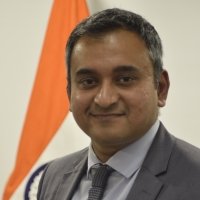
Former Assistant Director, National Security Council Secretariat, Government of India

Indo-Pacific Program
The Indo-Pacific Program promotes policy debate and intellectual discussions on US interests in the Asia-Pacific as well as political, economic, security, and social issues relating to the world’s most populous and economically dynamic region. Read more

